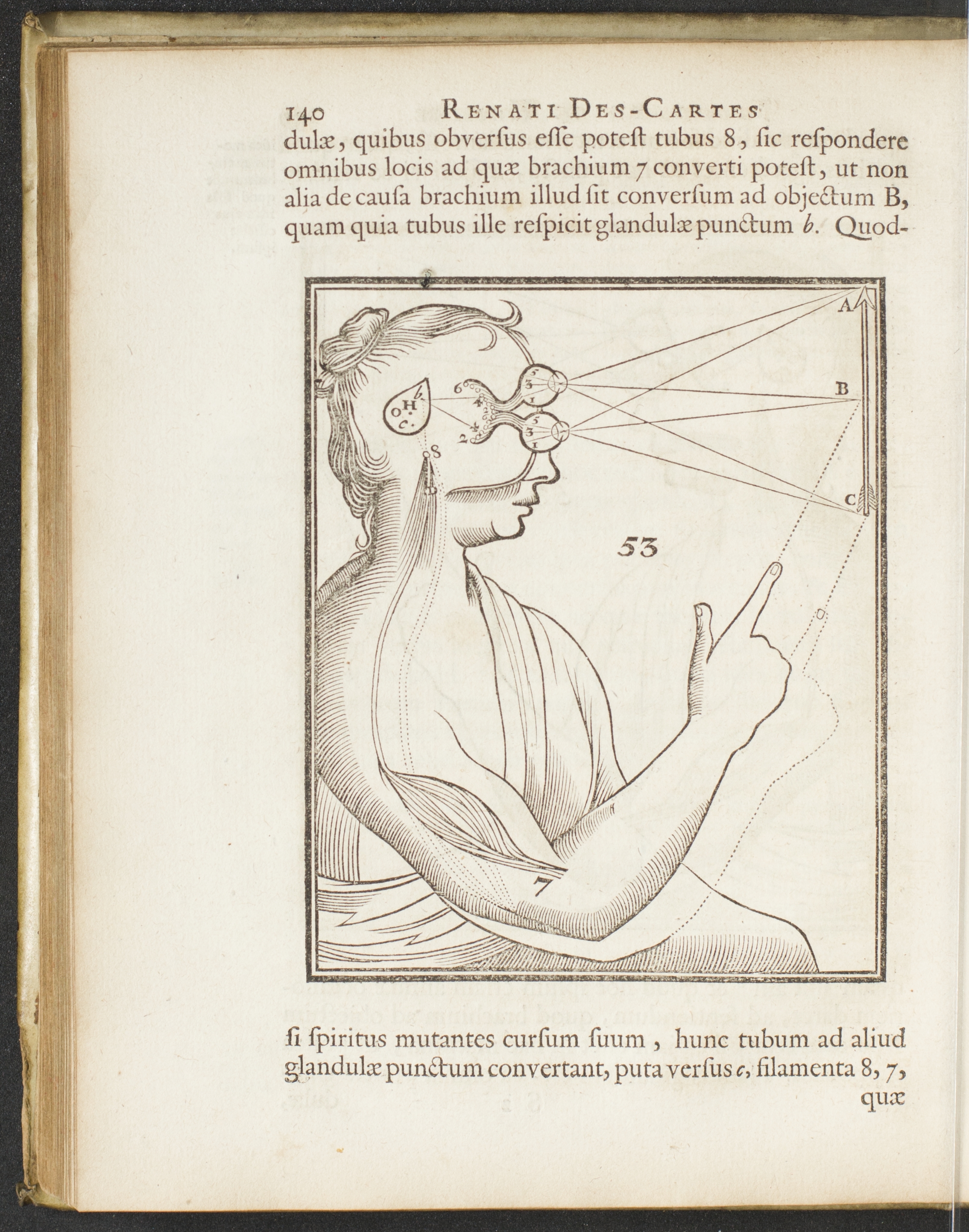Tractatus de Homine, et de Formatione Fetus

René Descartes (1596-1650) French philosopher, mathematician, and scientist was an early rationalist, and one of the leading figures of the scientific revolution. Descartes believed that the mind and body were two distinct aspects of humanity. Whereas men and women shared anatomical similarities with beasts, only people had a mind or soul. For Descartes, the key to discovering the soul was in the brain. Through close examination of human and sheep brains, Descartes decided that the size of the human pineal gland was the key to locating the soul. Whereas those of animals were large, those of people were small, and he imagined them to be controlled by the soul.
Descartes extended his theory of the soul to human vision, explaining how the retina and optic nerve interacted with the pineal gland to create depth perception. Descartes’s ideas of consciousness and the relationship of the human soul to the physical body had great influence on future philosophers. However, despite the excellence and detail of his illustration, Descartes’s anatomical theories were quickly discredited by trained anatomists like Thomas Bartholin and Nicholas Steno. Bartholin and Steno–more interested in the empirical approach than armchair speculation–found no evidence to support these theories. They also considered the pineal gland’s small size to be a mark against this theory, as its mass was too small to have any direct command over the rest of the brain.
